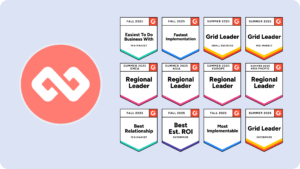Developing strong leaders is essential for any organization to succeed. However, the process of cultivating leaders doesn’t happen overnight. It takes investment, planning, and careful execution to create a successful leadership development program. In this article, we’ll explore the ins and outs of leadership development programs and share insights into how you can create an effective program for your organization.
Investing in the Future of Leadership
Investing in leadership development programs can yield significant benefits for organizations. Leaders who are knowledgeable, motivated, and skilled at engaging and inspiring others can drive innovation, improve team performance, and create a positive company culture. Effective leadership development programs can also help organizations retain top talent, improve employee engagement, and increase employee satisfaction.
One of the most critical components of a successful leadership development program is the identification of potential leaders. This process involves assessing the skills, strengths, and weaknesses of employees to determine who has the potential to become a successful leader. Once potential leaders have been identified, they can be provided with training, coaching, and mentoring to help them develop the skills they need to succeed.
Another critical component of a successful leadership development program is ongoing education and training. Leaders must be continually learning and growing to stay ahead of the curve and adapt to changes in their industry. Ongoing education can include attending conferences, taking courses, and participating in workshops and training programs.
Leadership development programs should also encourage collaboration and teamwork. Leaders who are skilled at working with others and building strong relationships can create a positive and productive work environment. Collaboration can also lead to innovation and new ideas, which can help organizations stay ahead of the competition.
It’s essential to measure the effectiveness of a leadership development program regularly. This process involves tracking key performance indicators, such as employee engagement, retention rates, and financial performance. By measuring the effectiveness of the program, organizations can make adjustments and improvements to ensure that they are getting the most out of their investment.
Investing in a robust and effective leadership development program can yield significant benefits for organizations. By identifying potential leaders, providing ongoing education and training, encouraging collaboration and teamwork, and measuring the effectiveness of the program, organizations can create a culture of strong and effective leadership that drives success and long-term growth.

Why Leadership Development is Important
Leadership development is crucial for cultivating competent and effective future leaders who nurture team growth and foster innovation within organizations. These programs enhance leaders’ skills, promoting improved communication, stronger team morale, and a deeper understanding of organizational dynamics, ultimately resulting in positive outcomes for their teams.
These development initiatives focus on building critical skills essential for effective leadership, such as assertive communication, conflict resolution, and change management. While experience remains a valuable teacher, structured programs can expedite growth by supplementing expertise with hands-on experience, accelerating professional advancement and enabling leaders to compete and exchange knowledge effectively.
Accelerated learning opportunities provided by many leadership development programs equip managers with the edge to complete modules and assessments swiftly. Online coaching programs further support leaders working full-time or managing multiple responsibilities, offering on-demand assistance.
Effective leadership strategies emerge from these programs, empowering leaders to craft innovative problem-solving approaches and enhance team performance. Improved critical thinking and analytical skills enable managers to confidently tackle challenges and inspire others, fostering team engagement crucial for success. Enhanced communication skills from leadership development contribute to team cohesion, facilitating easier motivation and guidance.
Moreover, leadership development equips leaders to navigate change effectively by honing skills in managing difficult conversations, making tough decisions, and employing problem-solving and communication techniques. Armed with the right skill set and mindset, leaders can confront challenges, steer change, and achieve their goals successfully.
How to Create an Effective Leadership Development Program
Creating an effective leadership development program is no easy feat. The process requires careful planning and execution. Here are a few steps you can take to create an effective program:
- Identify your organization’s needs: Before creating a leadership development program, it’s essential to understand the specific needs of your organization. Analyze your current leadership team’s strengths and weaknesses, identify areas for improvement, and consider the skills and competencies required for success in different roles.
- Establish clear objectives: From the outset, you should establish clear goals for the leadership development program. What skills do you want to develop in your leaders? What outcomes do you hope to achieve? Establishing clear objectives will help guide the design and implementation of the program.
- Design an effective curriculum: Once you have a clear understanding of your organization’s needs and objectives, you can design an effective curriculum. Curriculum design typically involves selecting a range of learning activities, such as classroom training, workshops, coaching, and mentoring.
- Implement and impact: With a plan and curriculum in place, it’s time to implement the program. Assess its effectiveness over time and make changes as necessary to ensure that the program meets the objectives set at the outset.
The Role of Mentorship in Leadership Development
Mentorship can play a critical role in leadership development programs. Often, mentorship provides key support and guidance for emerging leaders. Mentorship can provide opportunities to learn from experienced leaders, gain new perspectives, and build a network of connections.
A successful mentorship program requires careful planning, including identifying suitable mentors, establishing clear expectations, and providing training and support to mentors. There are so many reasons why your employees need mentoring, and so it’s vital to ensure that the relationship is mutually beneficial for both the mentor and mentee.
Learn more: Leadership Mentoring: Developing And Cultivating Effective Leaders
How to Measure the Success of Leadership Development Programs
Measuring the success of a leadership development program requires careful planning and evaluation. To evaluate the program’s effectiveness, you may consider a variety of metrics, including the following:
- Employee engagement levels
- Talent retention and attrition rates
- Leadership team performance
- Employee satisfaction surveys
By measuring these metrics, you can assess the program’s success over time and identify areas where improvements may be needed.
How do you measure a mentoring program? Learn more about the Simple Ways To Track Mentoring Program Success.
Evaluating Leadership Development Programs for Maximum Impact
Effective leadership development programs require continual evaluation and improvement. Ongoing evaluation can help identify areas where the program is succeeding and identify areas where improvements can be made. Common evaluation methods include surveys, focus groups, and one-on-one interviews with program participants.
Additionally, it’s essential to solicit feedback from employees who have not participated in the program – a segment often overlooked. This feedback can provide valuable insights into the program’s effectiveness and help leaders understand the impact of the program on the organization as a whole.
Developing Leaders Through Experiential Learning
Experiential learning can play a critical role in leadership development programs. Through experiential learning, emerging leaders can apply their skills and knowledge in realistic situations, gain valuable feedback, and build confidence.
Experiential learning can take many forms, including role-playing, simulations, case studies, and other hands-on learning activities. Mentoring Programs provide an exceptional playing field for this to occur. For experiential learning to have the biggest impact, it’s crucial psychological safety plays a large role – and trusted, engaged mentoring relationships work to create these conditions for success. The key to successful experiential learning is to ensure that the activities are relevant, challenging, and aligned with the program’s objectives.
Leveraging Technology to Enhance Leadership Development Programs
Technology can play a critical role in enhancing leadership development programs. From learning management systems to social networking tools, technology can provide opportunities to think outside the box when it comes to program design and delivery.
Consider using technology to deliver training in a variety of formats, including webinars, self-paced e-learning, and mobile learning. Technology can also be used to track and evaluate program effectiveness, providing real-time data insights into how participants are progressing through the program.
There’s a variety of Mentoring Program Platforms to choose from, be sure to consider: How To Choose Mentoring Software For Your Organization.
Mentoring vs Coaching Programs for Leadership Development
Mentoring and coaching are often used interchangeably in leadership development programs. However, they are distinct approaches to leadership development.
Mentoring generally involves a more experienced leader providing guidance and support to a less experienced emerging leader. Coaching, on the other hand, typically involves a professional coach working with a leader to help them achieve specific goals. In either case, it’s essential to select the approach that best aligns with your organization’s needs and objectives.
More on: Coach Vs. Mentor: What’s The Difference?
Creating a successful leadership development program requires investment, planning, and careful execution. By following these best practices, organizations can develop the leadership skills needed to drive long-term success. Whether it’s leveraging technology to enhance the program, incorporating experiential learning, or selecting the right mentorship or coaching programs, there are many ways to build an effective leadership development program that delivers results.




